


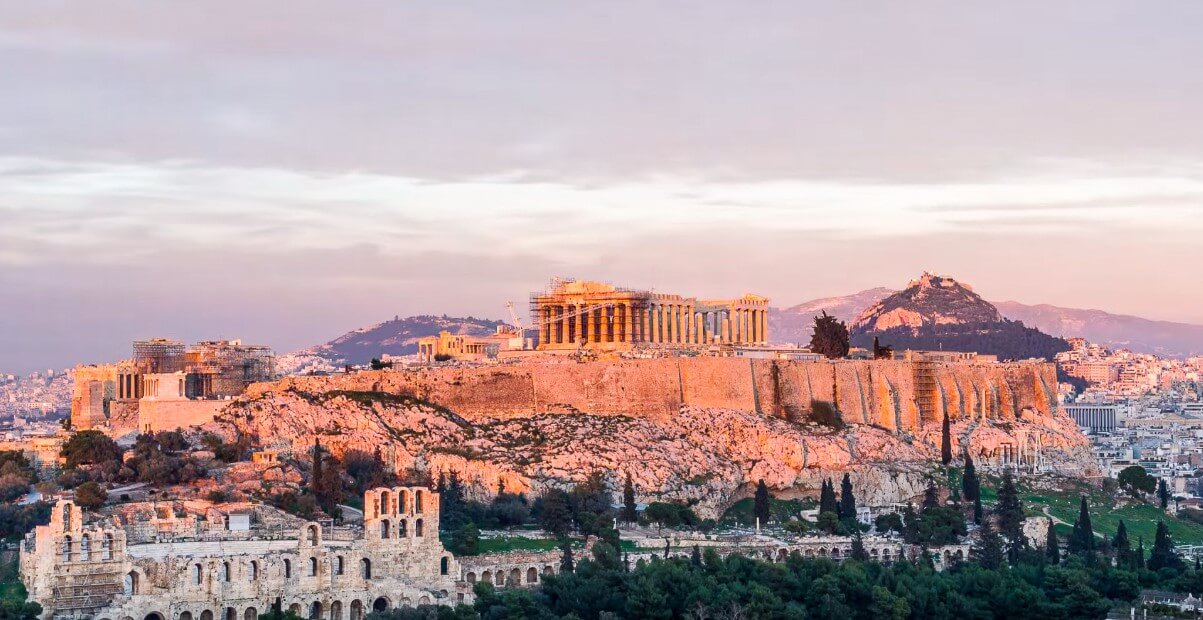
We Need Your Support!
We want to remind you that Athens by Locals is reader-supported. By booking tours, hotels, tickets, and other travel services through the links on our website, you can help us continue providing valuable content and information. Note that we receive a small commission only if you make a booking using our links at the time of your visit. So, if you're not quite ready to book yet, you can save this post and the links and return to make your booking when the time is right. We genuinely appreciate your support and are thrilled to have you in our travel community. Please don't hesitate to reach out if you have any questions or need assistance. Happy travels!
The rich history and remarkable archaeological sites of the Acropolis of Athens make visiting this hill an incredible experience. Athens, Greece is one of the most visited cities in the world. It is the birthplace of Western civilization and is known for its many archaeological sites. Its most coveted site is the once fiercely fought-over hill, also known simply as the Acropolis.
A visit to the famous site that was named “preeminent monument” on the European Cultural Heritage list of famous monuments is a definite must for your trip to Athens.
In this article, we’ll go over the long history of the Acropolis, break down all the monuments you will find on and near the hill, and finally provide some local insight on how and when is the best time to visit.
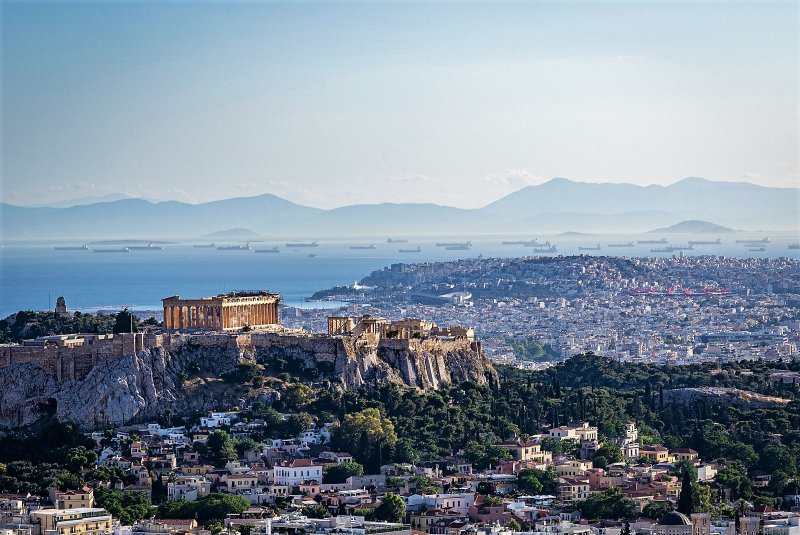
The world-renowned Acropolis of Athens is much more than the building of the Parthenon that you have seen in postcards and online articles.
The name refers to an ancient citadel standing on a rocky hill that overlooks Athens and is dotted with some of the most significant monuments of the city’s past.
The word itself combines the words ‘akron’ and ‘polis’, the former translating to “highest point” and the latter to “city”.
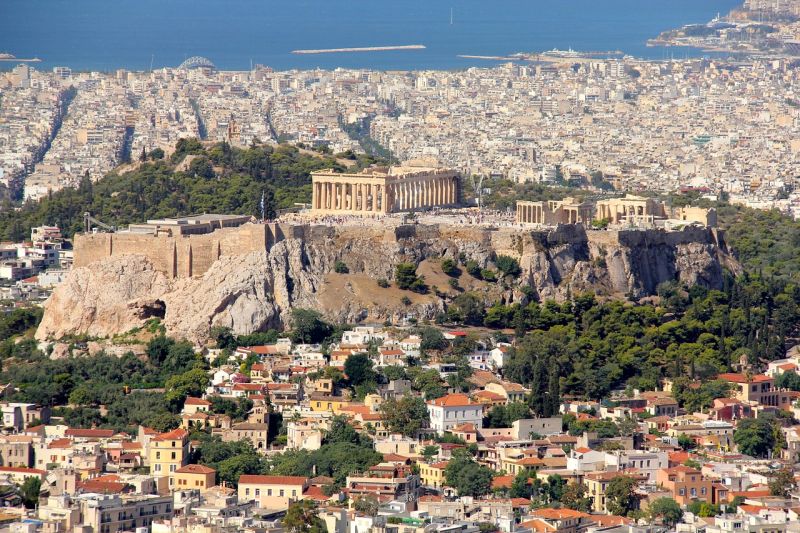
There are, in fact, many more acropolises in Greece, but due to its importance, the Acropolis of Athens is commonly referred to simply as “The Acropolis”. In ancient times, it was also known as Cecropia, taking the name after Cecrops, the legendary first king of Athens.
Although inhabited since the early Neolithic period, the Acropolis of Athens rose to fame during the 5th century BC under the rule of Pericles who oversaw the construction of the hill’s most prominent monuments.
Through the centuries, the Acropolis has been damaged and partially destroyed enough times to call its survival a miracle.
Below, we’ll take you through the long history of the Acropolis in more detail.
There is enough proof to support that the Acropolis of Athens and the surrounding areas have been inhabited since as early as the Early and the Middle Neolithic period (i.e. circa the 6th millennium BC).
It is widely believed that, during the Bronze Age, it was home to a Mycenean palace surrounded by a massive 10-meter-high Cyclopian wall.
This wall would eventually survive long after the palace was destroyed, serving as a fortification until the 5th century.
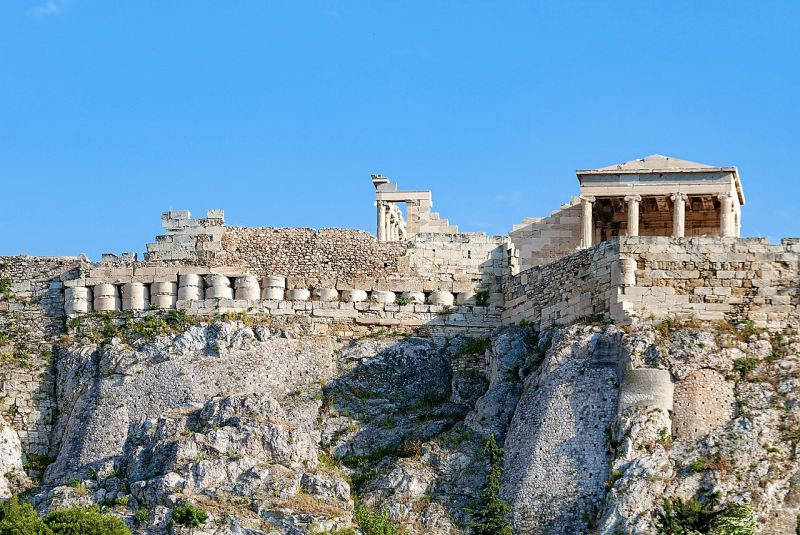
Later on, during the Archaic Era, the Acropolis stood still as the city below delved in political unrest.
And while failed revolts and coups d’état took place, the hill transformed from an impenetrable fortress to a place of religious worship.
Around that time, the Older Parthenon and the Old Temple of Athena were built to pay tribute to the patron goddess of the city.
Yet, neither survived the Second Persian invasion of Greece (480-479 BC).
After the war ended, several architectural parts of the two buildings were used to make up a war memorial on the northern wall of the Acropolis and can still be seen today.
Skip the Line: Tickets for Acropolis of Athens
The Golden Age of the Acropolis coincided with the Golden Age of Athens (460-430 BC), when the city was under the rule of Pericles.
During this time, the popular political leader ordered the construction and renovation of almost all the major temples of the Acropolis, including the iconic Parthenon.
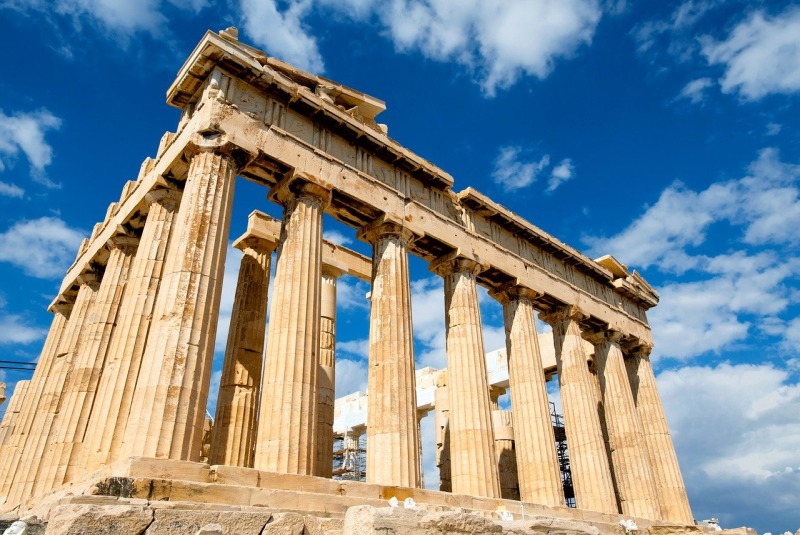
The colossal project was undertaken by two famous architects, Icitnus and Callicrates, and a local sculptor, Phidias.
Soon enough, the Acropolis was transformed again, taking the familiar form we still admire today and considering the most grandiose achievement of the Classical Period of Athens.
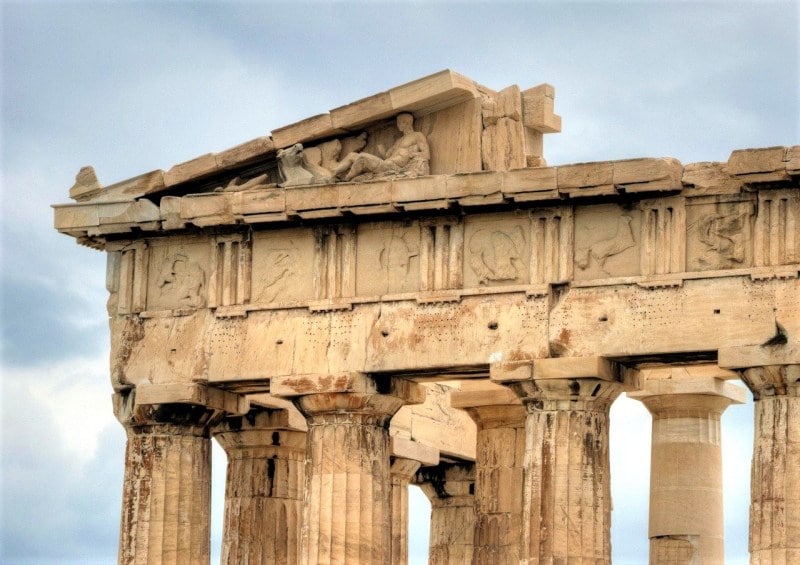
Some of the most famous monuments that were built during that period include the Parthenon, the Gate of Propylaea, the Temple of Athena Nike, the Temple of Erechtheum that was originally supported by the iconic statues called the Caryatids, and the legendary gigantic bronze statue of Athena Promachos.
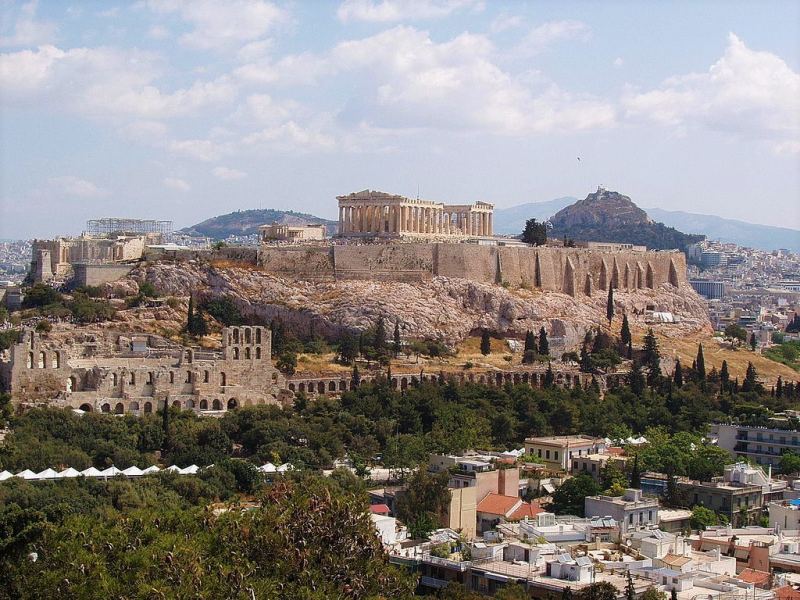
The Hellenistic and Roman periods marked another new age for the Acropolis.
Restorations of older buildings on the hill were damaged from the passing of time and occasional wars began, but there were some additions as well.
These included mainly new monuments to foreign kings like Attalos II and Eumenes II that were later rededicated to Augustus and Agrippa, prominent civilians of the Roman Empire, as well as the Temple of Rome and Augustus.
In 161 AD, Herodes Atticus built the grand amphitheater (known as Odeon Herodes Atticus) on the hill’s southern slope, one of the most popular attractions of Athens today.
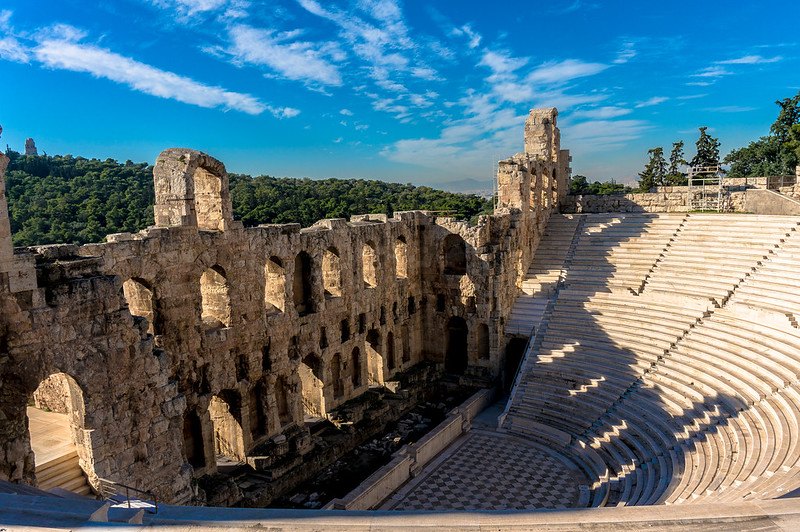
The Byzantine and Ottoman Periods brought significant changes to the hill of the Acropolis.
During the times of Byzantine reign over the city of Athens, the temple of the Parthenon was repurposed to serve as a church dedicated to the Virgin Mary.
After the Ottomans conquered Greece, the Parthenon was used for an entirely different reason: as the headquarters of the Turkish army, while the Erechtheum became a harem for the governor.
Finally, during the times of the Morean War, the Parthenon was turned into a gunpowder warehouse.
Book Now: Skip the Line Tickets for Acropolis of Athens
As seen above, the buildings and monuments that adorn the hill of Acropolis have been through many different times and ages.
Naturally, the passing of time, war, and different empires have left their mark on what we know today as a sightseeing spectacle.
But there was one particular event that would alter the famous site forever. On the 26th of September in 1687, the Venetians launched an attack upon Acropolis Hill, bombarding the Parthenon which at the time served as an ammunition depot. The attack destroyed a large part of the temple and the consequent looting and vandalisms robbed future generations of an abundance of cultural wealth.
It wasn’t until more than a century later, the destruction of the Parthenon by the Venetians, that attempts to save some of the glory of the Parthenon were put in motion.
In 1801, the seventh Earl of Elgin, Thomas Bruce, got permission from the Turkish government that had occupied Greece to remove some of the temple’s sculptures.
Indeed, Elgin removed more than half of Parthenon’s sculptures, which he ensuingly sold to the British Museum, where they are still located to this day.
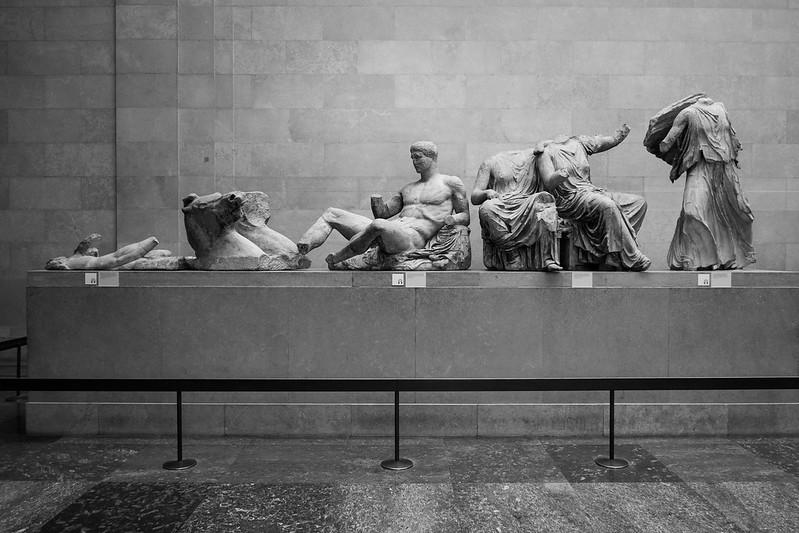
During the past decades, the Greek government has taken steps to retrieve the “Elgin Marbles” -as they are commonly known.
The dispute between the governments of Greece and Britain still goes on nowadays.
During the past years, it became more than apparent that the course of time and the city’s pollution had taken their toll on the monuments up on Acropolis Hill.
Thus, the Greek government founded the Committee for the Conservation of the Monuments on the Acropolis, including archaeologists, architects, and civil engineers.
In 1975, this committee set in motion a major restoration project in an attempt to reverse and limit the decay the buildings had suffered.
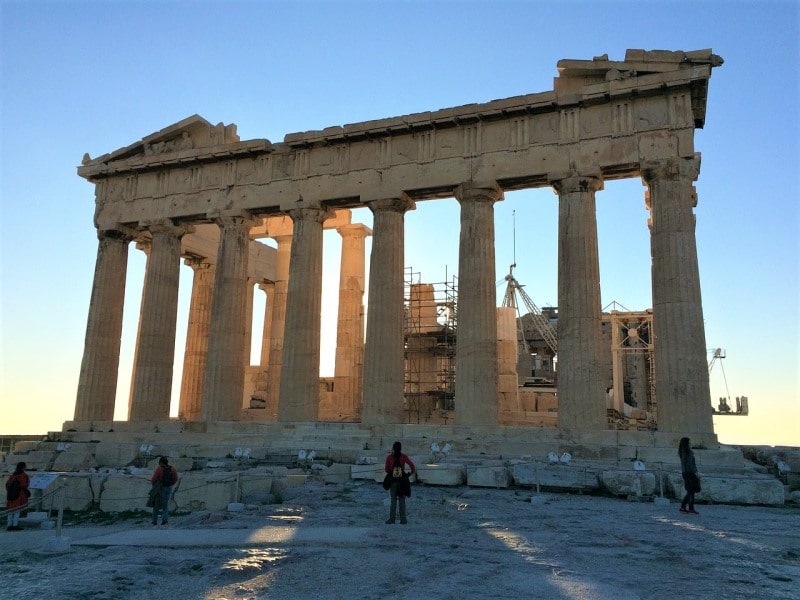
The project’s goal was to identify all the stone fragments that were originally part of the buildings still lying on Acropolis Hill and use them to reassemble large parts of the monuments.
The restoration involved a peculiar mixture of scientific research, cutting-edge technology, and millennia-old building techniques, which produced great results.
An estimated 2,675 tons of architectural members have been restored to this day, including the Temple of Athena Nike, the roof and floor of Propylaea, and the Parthenon colonnades.
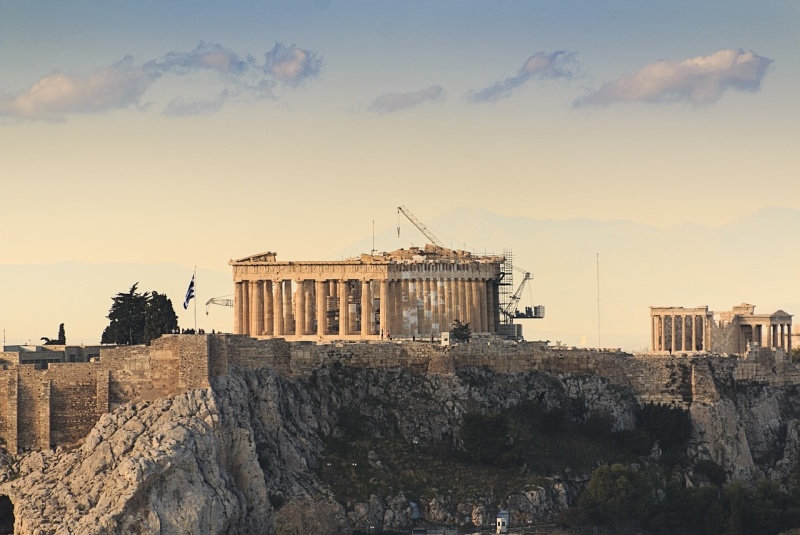
This long process is still in progress to this day. The restoration involves repairing much of the structures in a way that is actually reversible in case future generations decide to remove or alter what has been done.
The Acropolis and all its wonders have been celebrated worldwide since ancient times.
Most of the structures were built to honor the patron goddess of the city, Athena, and every 4 years, the people of the city would hold a festival called Panathenaea, which paid tribute to the goddess and was just as popular as the Olympics during that time.
The structures and archaeological sites of Athens have, for centuries, been an inspiration for art and architecture throughout the world.
Especially in the past few centuries, with the wave of classical revival throughout the Western world, the Acropolis has been regarded as the symbol of Greek heritage and the cornerstone of Western civilization.
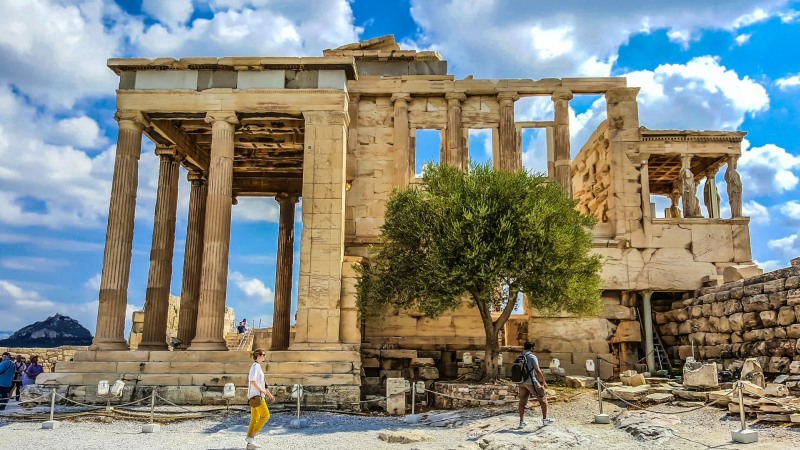
The monuments and archaeological sites on Acropolis Hill are renowned aesthetically for their Ionic and Doric architecture, encompassing a plain style and simple exteriors, which seem to blend in with their natural surroundings.
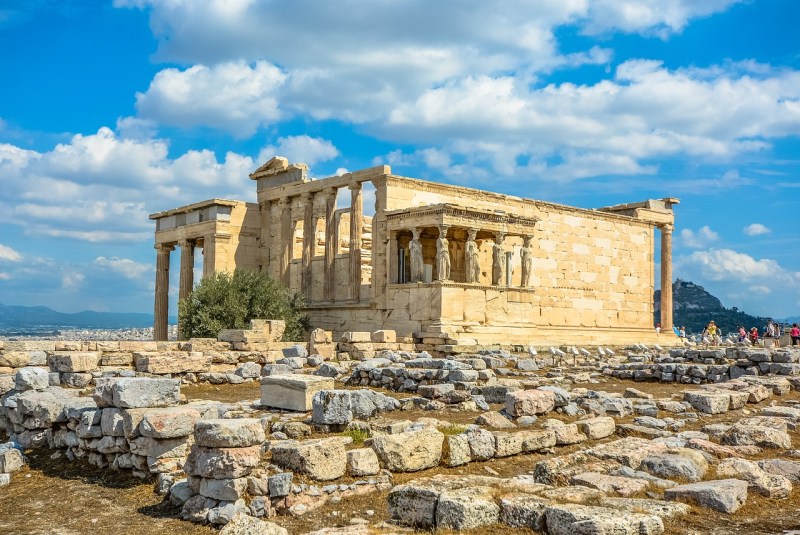
Today’s monuments include the Parthenon, Erechtheion or Erechtheum, Propylaia, Athena Nike, Arrephorion, some circuit wall rocks, and other scattered architectural remains.
Of the five main buildings, the most prominent – now and during the Acropolis’ heyday when several other buildings scattered the landscape – are the Parthenon and the Erechtheum.
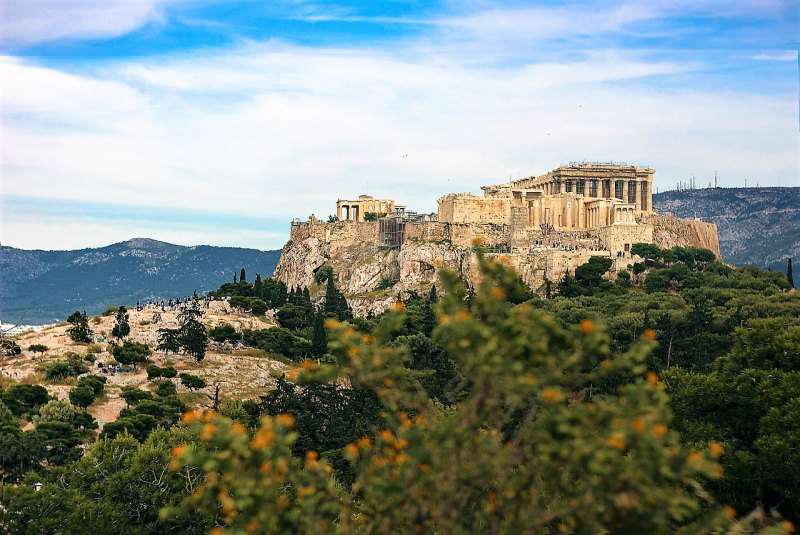
Both significant to the Athenians of the classical period, as well as the people of today for their cultural importance, the Erechtheum and the Parthenon in Athens clearly dominate the landscape of the Acropolis.
In this section, we will go over some of the most significant monuments you can still see on the famous hill and give you some general information about each one.
Save Money: The Athens Pass includes skip-the-line tickets to the most important monuments and attractions in Athens like the Acropolis, the Acropolis Museum, the Ancient Agora, the Roman Agora, and many more!
The Parthenon is a former temple on the Acropolis of Athens. It is, without a doubt, one of the most famous structures in the world and is seen as the foremost symbol of democracy.
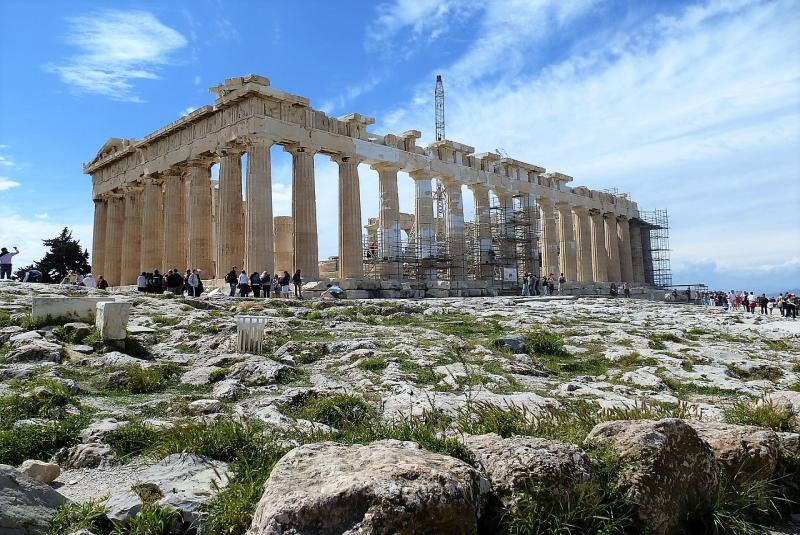
Completed in 438 BC, it is considered the pinnacle of Doric achievement, while the various artistic offerings found on and inside the building are renowned for being the highest level of classical Greek art.
Much of the art that was in the Parthenon and the other buildings in the area were sold to England in the 1800s and are now in the British Museum in London.
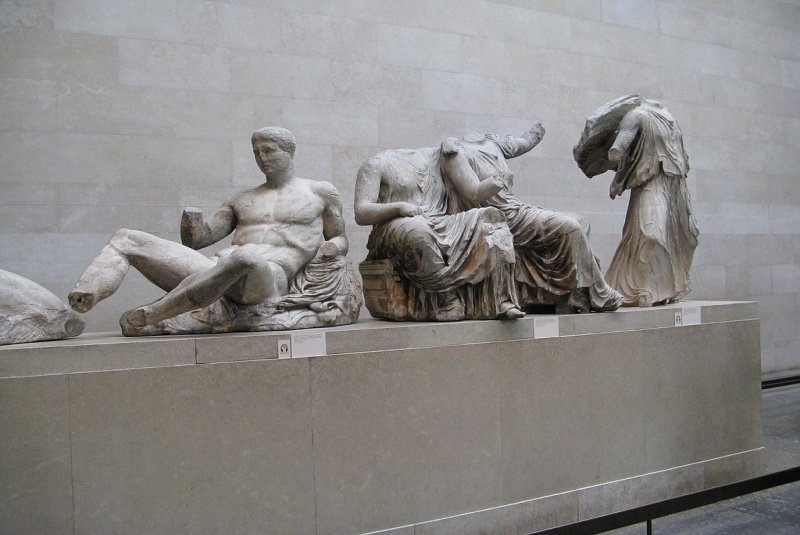
Like most structures found in Acropolis, the Parthenon was built to honor the goddess Athena and there was, in fact, a giant statue of the patron goddess made out of gold and elephant ivory that greeted visitors to the building in ancient times.
Through the years, the building served many purposes. It was originally a civic center and treasury, harboring several pieces of gold and treasure.
It was later converted into a Christian church during Byzantine times.
Then, under Ottoman rule, its purpose was again changed; this time, it was converted into a mosque.
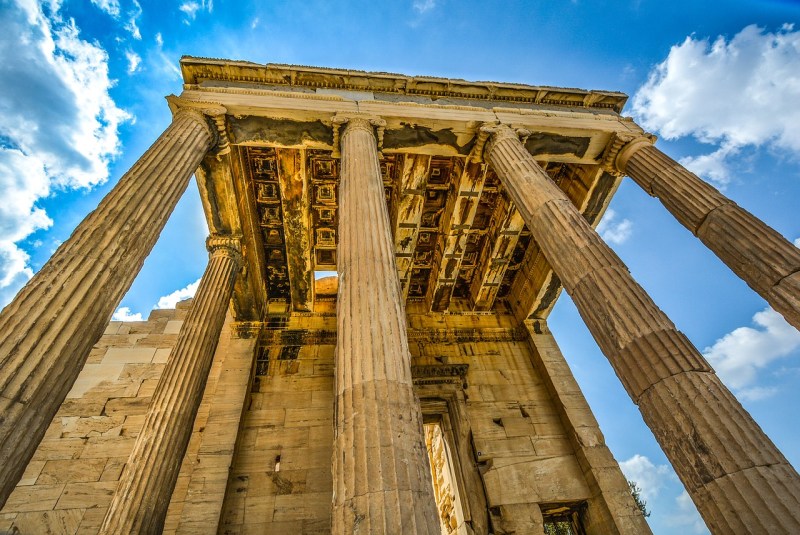
The Parthenon, Athens’ defining structure throughout its history, was partially destroyed along with some of the other structures in the 17th century when the Venetians attacked the city. This is why it lay in ruins today.
Book Now: Skip the Line Tickets for Acropolis of Athens
The Erechtheum was the last significant structure built on the Acropolis of Athens and, interestingly, seems to be a monument built by the ancient Greeks dedicated to both gods who mythically battled over the city, Athena and Poseidon.
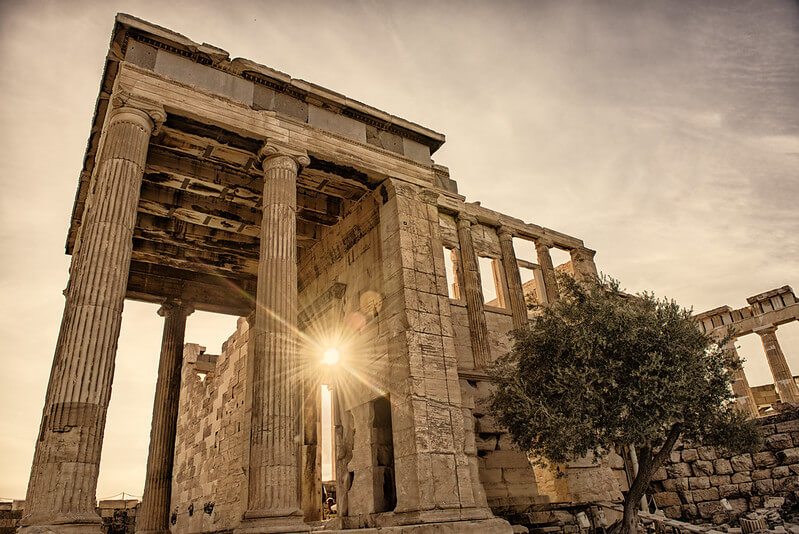
While the Parthenon was used for important civic events, the Erechtheum was seen as equally significant for the ancient Greeks’ religious ceremonies.
One of Erechtheum’s most signifying features is the porch of Caryatids on the building’s south side.
Columns on this side of the Erechtheum are carved into six Caryatids, which were female maidens of the time.
The importance of this is unknown, but it makes for a beautiful artistic façade.
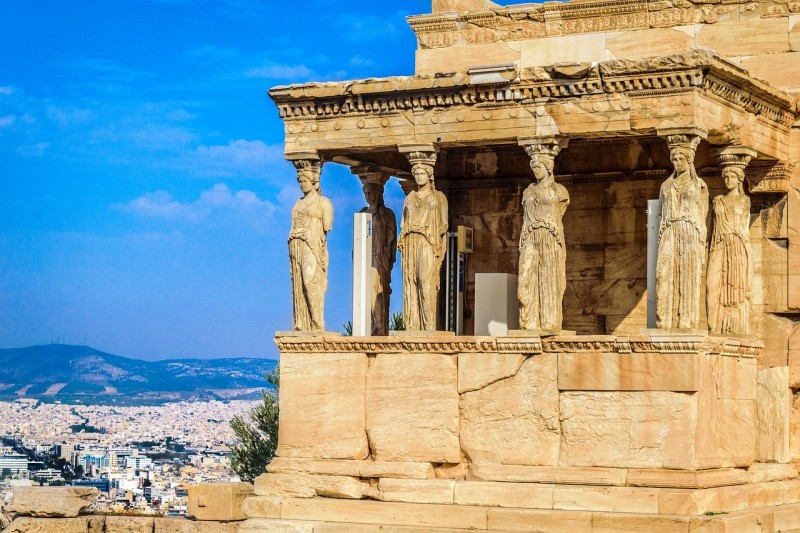
Built sometime between 427 and 427 BC under the supervision of Kallikrates, the Temple of Athena Nike is located atop a platform on the southwestern edge of the Acropolis.
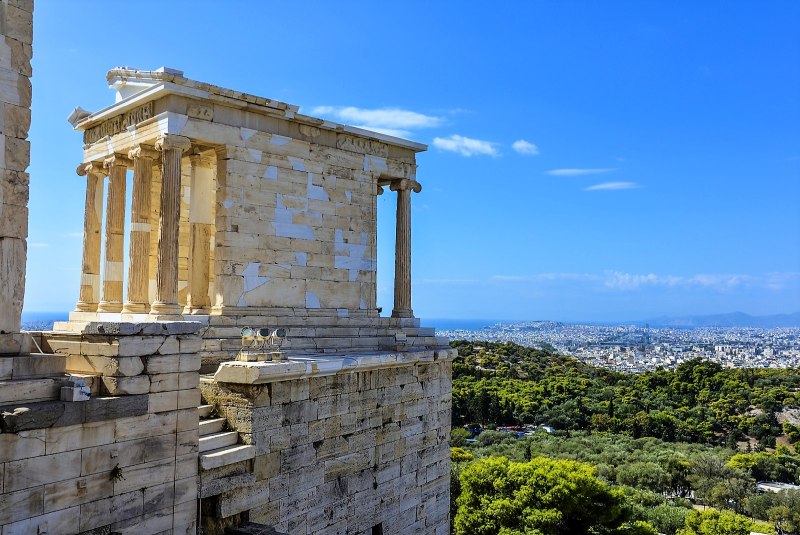
It stands on four Ionic-style columns and used to feature a frieze that depicted magnificent scenes from former wars and stories drawn from Greek mythology.
The frieze is destroyed to a large extent, but still, parts of it have survived the passing of time and can now be found in the Acropolis Museum.
The Temple of Athena Nike was once home to a majestic statue of Athena holding a helmet and a pomegranate in each hand, the symbols for war and fertility, respectively.
Unfortunately, visitors are not permitted to enter the temple, but you can still admire the beauty of the building from afar.
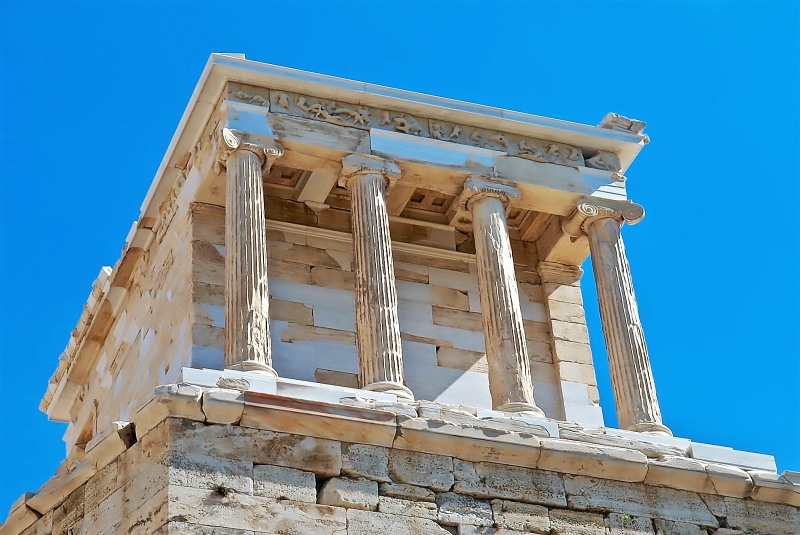
The gate of Propylaea was designed by Mnesicles and built around 437-432 BC to serve as the gateway to the Acropolis. It was the only way to get to the Acropolis from the city in ancient times.
It encompasses a central hall and two symmetrical lateral wings.
The northern one was used as a gallery, while the southern one was the antechamber of the Temple of Athena Nike.
An explosion in the 17th century severely damaged the Propylaea, and its restoration process has not been completed to this day.
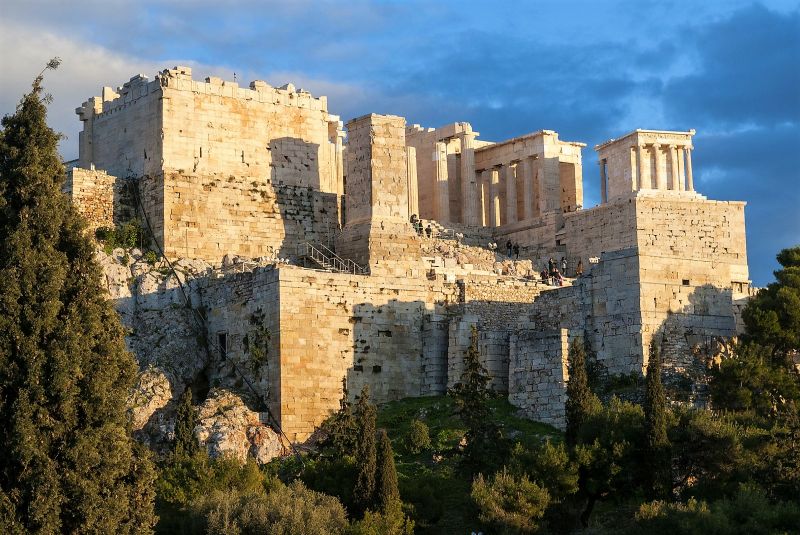
Skip the Line: Tickets for Acropolis of Athens
Only a few meters away from the gate of Propylaea, you’ll find the remains of Athena Promachos, one of the several impressive statues located on the Acropolis and formed a path from the gate all the way up to the hill.
Sculpted by Pheidias, this 9-meter tall statue symbolized perseverance and celebration of the victory of Athenians over the Persians.
It depicted the goddess Athena with a spear in one hand and a shield in the other. It was moved to Constantinople in 426 AD by Emperor Theodosius.
Dedicated to the goddess Athena, the Panathenaia was the most celebrated event of ancient Athens. It included all kinds of spectacles like dance and drama performances, athletic competitions, and music contests.
However, the most important aspect of the event was the procession on the last day, which involved Athenians carrying sacrifices for the Goddess and the sacred shawl named “peplo” from Kerameikos to the Erechtheum. There, the “peplo” was placed on the statue of Athena Polias, marking the end of the ceremonies. The Panathenaic Way is the name given to the route starting from Kerameikos, passing through the Acropolis, and leading to the temple of Erechtheum.
The southwestern slope of the Acropolis hill bears great significance for the city of Athens.
It is the location where all the public buildings were built and the most famous gathering spot of ancient Athens.
This is where Athenians held the city’s most popular religious, athletic, and artistic events.
In this section, we’ll break down the sites that make up this area and provide useful information on each.
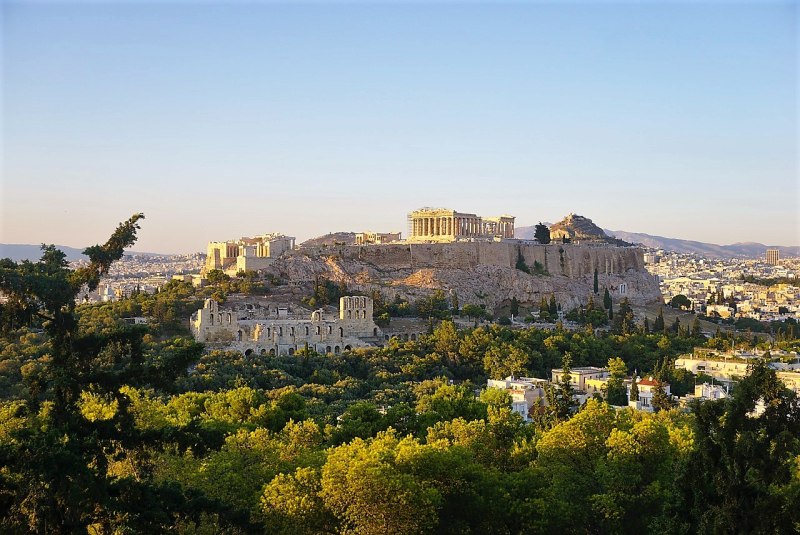
The Theater of Dionysus is a real architectural wonder that was brought to the surface in 1838 by the Greek Archaeological Society.
It dates back to the 5th century, and it was designed by Lycourgos and built in stone and marble.
The result was a colossal auditorium of 17 thousand seats close to the sanctuary of Dionysus.
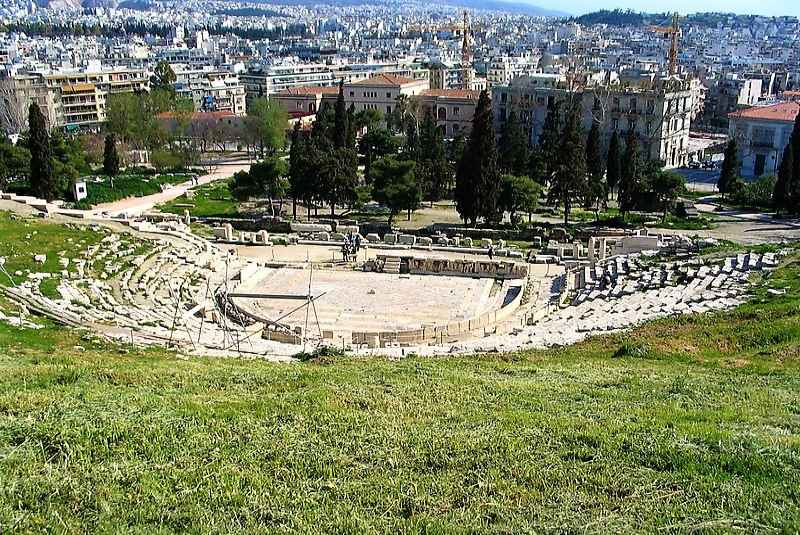
During the Golden Age of Athens, the Theater of Dionysus hosted one of the city’s biggest cultural events: the Festival of the Great Dionysia.
The festival attracted crowds from all over the country and featured plays written by famous writers like Aristophanes, Euripides, and Aeschylus, sponsored by wealthy upper-class citizens and politicians.
The Askleipeion is a sanctuary dedicated to the worship of the son of Apollo, Asklepios. It is on the west side of the steps leading up to the Theater of Dionysus.
The Greek Archaeological Service also brought it to light, which revealed the temple’s foundations, an altar, and two stops (passageways) dating back to the 5th century BC.
The Stoa of Eumenes is located right beneath the Asklepieion.
The name refers to a colonnade made of marble and stone and built with the purpose of serving as a shelter for the crowds going in and out of the Theater of Dionysus.
It takes its name after the King of Pergamos, Eumenes II, who ordered its construction.
Built by Thrasyllos in 320 BC, this temple used to stand on what is commonly called the “katatome”, the artificially flattened-out huge rock on which the Theater of Dionysus stands.
Unfortunately, the only elements of the temple that remain to this day are two Ionic-style columns that overlook the church of “Panagia Hrysospiliotissa” which is nestled in a small cave behind the theater.
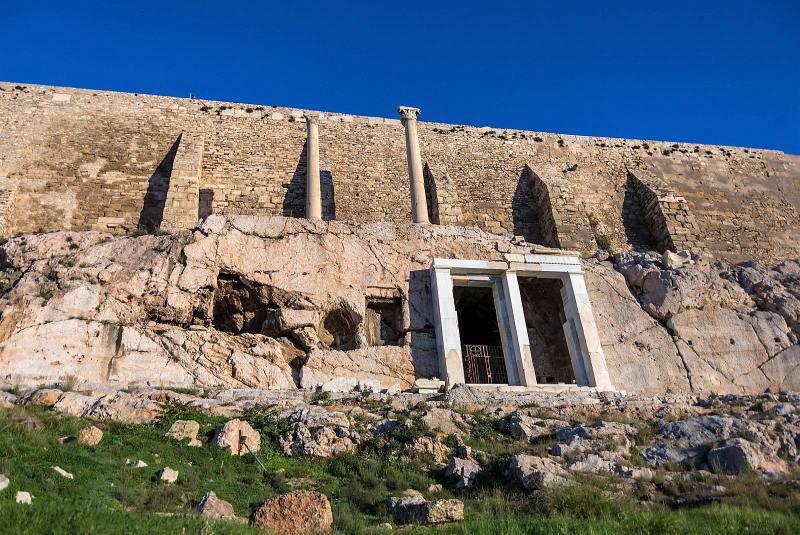
This is one of the most popular attractions of Athens even today.
Built by an affluent Roman civilian named Herodes Atticus in memory of his wife in 160 AD, this magnificent theater can accommodate over 5000 guests in a huge amphitheater with marble seats.
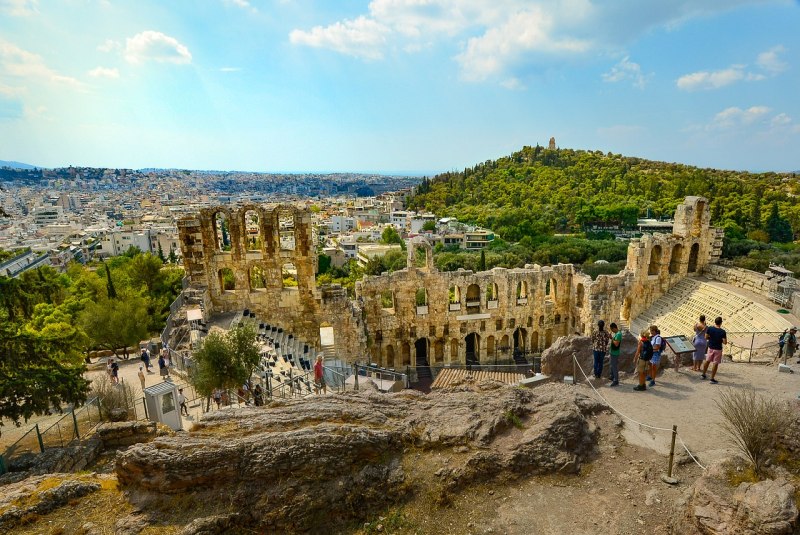
This architectural gem was discovered in 1958 and was fully restored about a century later.
Today, the Theater of Herodes Atticus houses the summer Athens Festival which draws top-class artists and crowds from all over the world each year.
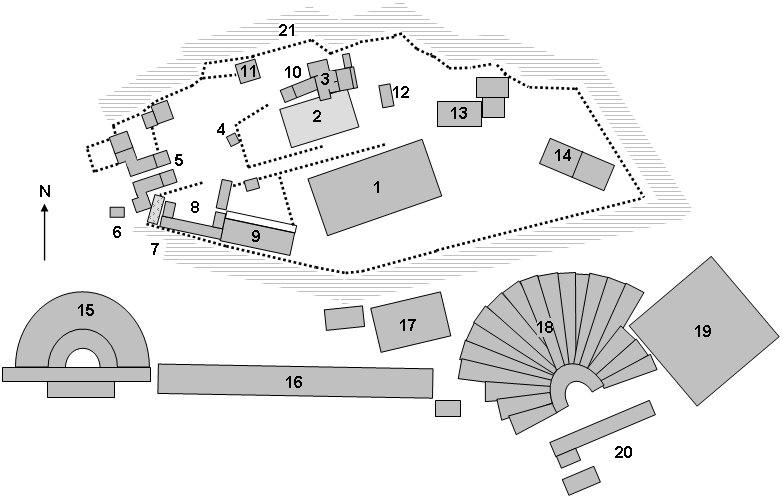
The Acropolis Museum is a must for those who want to see the exhibits that complement the monuments of the Acropolis Hill and get even deeper into the history and culture of Athens.
The majestic archaeological museum features findings of the Acropolis and houses all artifacts that were found on the hill and on its slope from the Greek Bronze Age to Byzantine Greece.
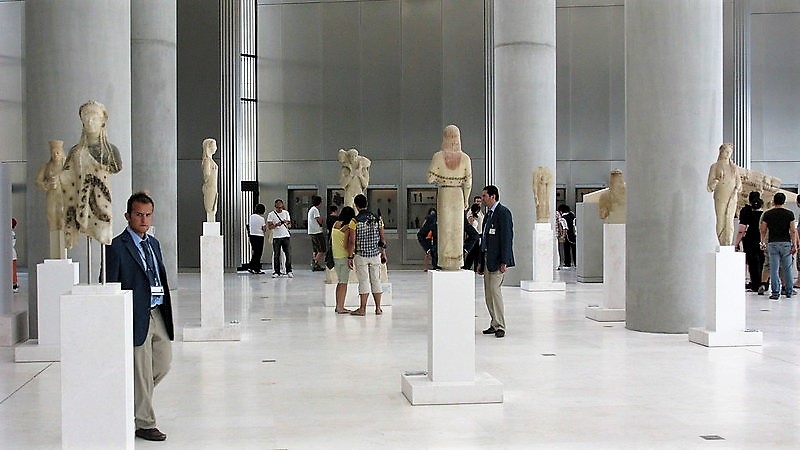
The Acropolis Museum was founded in 2003, in preparation for the Olympic Games of Athens in 2004 but eventually opened its doors to the public in 2009.
It is built on Roman and Byzantine ruins and it lies only a few minutes away from the entrance to the Acropolis.
The modern museum features over 4,200 exhibits that you cannot afford to miss.
Also, when you visit the Acropolis museum, make sure to spend some time at the museum’s cafe. It’s totally worth it.
If you want to learn more about the Acropolis Museum, have a look right below.
The best time of the year to visit the Acropolis in Athens is either in the spring or the fall time.
During these times the weather in Athens is almost perfect and the crowds are down from their summertime maximums.
You can learn more about the weather in Athens here.
If you do decide to visit the Acropolis in Athens during the summer, this too can be an exciting time.
The warm weather and large crowds are sometimes welcomed by some tourists hoping to take in the area’s amazing archaeology sites with other travelers experiencing the same joy of the moment.
Skip the Line: Tickets for Acropolis of Athens
Acropolis Hill is the heart and soul of Athens, and it’s located right in the city center, making it quite easy to reach no matter where in the city you are staying. Here are your options for getting to and from the Acropolis.
You can get to the Acropolis easily on foot, starting from Syntagma Square, Monastiraki Square, Psirri, Thission, Koukaki, and Petralona. The walk to the Acropolis from Syntagma Square, for example, is approximately 20 minutes.
The closest metro station to the hill is the Acropolis metro station (red line) which is located right next to the Acropolis Museum. You can also reach the Acropolis via the Thisseion Station (green line) or the Monastiraki Station (green and blue line).
The bus stop closest to the Acropolis is called “Apheteria”. To get there, hop on bus line 230, which runs through the city center. When you get off, you’ll only need to walk about 5 minutes to reach the entrance to the Acropolis.
There are tours that will take you up to the Acropolis daily where you’ll have the opportunity to take a guided tour of the historic area. You may also elect to travel to the site yourself and either catch a tour, as it starts for a fee, or walk around on your own and explore the area.
You can find some great options for a guided tour of the Acropolis and the Acropolis Museum. Check some right below
The price for admission to the Acropolis is relatively cheap compared to other major European attractions.
Bear in mind that the fees may change from time to time, according to the instructions of the Ministry of Culture.
Below you can find a price list for the entrance fees for the Acropolis:
Valid for the archaeological site of the Acropolis and its Slopes. Tickets are available at ticket offices on-site as well as online.
Save money: If you like to visit some more Archaeological Sites besides the Acropolis, then book the Athens Combo ticket.
Entrance to the Acropolis is free on certain days each year. These days are the following:
Apart from the dates when the entrance to the Acropolis is free, there are also some cases when you can get free admission.
More specifically, admission is free for:
Yes, you can buy tickets to the Acropolis online via the official portal. Just click on this link and follow the steps. Keep in mind that even though you can get and print regular tickets online, things are more complex for reduced tickets.
If you want a reduced ticket, you’ll have to print a voucher that is issued online and then validate it with your ID or passport at the Acropolis ticket office to get your entrance ticket.
Heads Up: Buying a ticket online usually does not mean that you will get on the site faster. You may skip the ticket office queue, but the line to the Acropolis at the entrance will probably still be quite long. If you want to book a ticket online and skip the lines entirely, you can do it now here.
The Acropolis is normally open from sunrise until sunset. This means that the opening hours change depending on the season.
In the winter, Acropolis is open from 8 am until 5 pm. In the summer, Acropolis is open from 8 am to 7 pm.
Keep in mind that there are certain days when the Acropolis is closed altogether. The days that Acropolis is closed are the following:
People with disabilities can access the Acropolis effortlessly thanks to the brand new elevator that was installed on the northwestern side of the hill.
The new, cutting-edge elevator replaced an older one that was closed down for maintenance several times throughout the year, causing the disappointment and frustration of visitors with mobility impairments.
The new elevator will be fully operational year-round and there are two specially designed vehicles both on the bottom (departing from Dionysiou Areopagitou street) and the top of the hill to make reaching the elevator easier.
In addition, two new disabled routes on top of the hill have been laid out to make sightseeing for people with reduced mobility more comfortable. They are about 500 meters long and 4 meters wide and cover the north and east sides of the Parthenon.
You can find more information on the new Acropolis elevator and the new disabled routes right below.
As mentioned above, the Acropolis is conveniently located in downtown Athens, among some of the most popular neighborhoods in the city like Koukaki, Thisseion, Petralona, Monastiraki and Syntagma. Any of these would be an excellent choice if you’re looking for a hotel near Acropolis. The rest is up to your personal tastes.
If you’re looking for a luxury hotel near Acropolis, we’d recommend having a look at the Divani Palace Acropolis which features a rooftop terrace with extraordinary views of the Parthenon or Hotel Hera for some high-class amenities.
For a real value-for-money option, we strongly suggest Attalos Hotel which combines beautiful design, top-notch facilities, and great rates.
Alternatively, check out A for Athens for a boutique hotel experience in one of the hippest spots in Athens.
Finally, if you’re traveling on a budget and you want to book a hotel with a privileged location but with a minimum cost, try out the Pella Inn Hostel which provides everything you’ll need at very low prices, or Phidias Hotel that’s located on the most popular pedestrian street in the city.
For the outro of this article, we’ll give you a few tips and recommendations on how to get the most out of your visit to the Acropolis and answer some of the most frequently asked questions our readers have when it comes to visiting the famous site.
An Acropolis is technically just a high piece of land that was a popular strategic location to build cities on in ancient times due to the advantages it offers, like being able to see an incoming attack from any direction. The Acropolis of Athens was indeed used as a fortress for many centuries, but later on, it became a place of religious worship and cultural importance during the Golden Age of Athens.
Throughout the centuries, Acropolis has been a citadel, a home to kings and rulers, a religious holy place, and a hub for arts and culture. Today it stands as a symbol of ancient Greek culture, democracy, and western civilization as a whole.
It is a common misconception that the Acropolis and the Parthenon are the same thing. In fact, Acropolis is the name of the hill that stands in the center of Athens. The name roughly translates to “high city”. Parthenon is the name of the famous temple that stands atop the hill of the Acropolis.
The area was first inhabited dating back to the Neolithic period, which means people could have been living here since around 6000 BC. However, it wasn’t until the 6th century BC that structures started being built on top of the hill. Since then, many structures have been built, defended, and destroyed on Acropolis with only a handful of the ancient monuments still standing today.
The Acropolis of Athens is a massive archaeological site that is full of different monuments to explore and stories to learn. We do recommend that you take your time to enjoy it while visiting and that you don’t limit your visit to less than 3 hours.
The Acropolis Museum is probably the most exciting museum in Athens. Its building is a real architectural gem and its exhibits will take you through millennia of the city’s history and cultural heritage in just a few hours. After a visit to the Acropolis Museum, you’ll have learned so much about Athens that the rest of your visit to the city will be much more enjoyable.
There is no short answer to this question. There is always some restoration process going on on the hill of the Acropolis. However, the Greek Central Archaeological Council has recently decided that a part of the Parthenon is to be rebuilt in the following years.
Acropolis has suffered much damage through the years. The greatest one was on 26 September 1687 when the Venetian invaders bombarded the hill. At the time, the Parthenon temple was serving as an ammunition depot and the attack resulted in a large explosion that damaged the monument severely.
No, Parthenon was never one of the seven wonders. However, the sculptor that was responsible for its construction was the artist behind the Statue of Zeus at Olympia which is one of the seven wonders of the ancient world.
You can only visit the Acropolis during opening hours. However, you can still enjoy the views of Acropolis Hill at night or even join a tour to visit the Acropolis museum after sundown.
While you won’t be able to get inside the temple, you can still visit the park around the Parthenon at night and enjoy the amazing view or even get some great nighttime photos.
The best times to visit the Acropolis to avoid crowds are early in the morning, or in the late afternoon, after most tour groups have left. Additionally, visiting during the off-season (autumn or winter) or on weekdays can also help to avoid large crowds.
The Acropolis of Athens is famous all around the world not only because of its beauty but also as a living and surviving symbol of western civilization, culture, and democracy.
Even if you only have a few hours to spend in Athens, you probably already know that you have to visit the Acropolis; and we trust that you will. It is an ancient wonder and a modern-day legend.
Just follow our guide to make the most of your visit and make sure to take everything in and pack the most beautiful memories to bring back home with you.
A Quick Reminder:
Remember that Athens By Locals is here to guide you with planning the perfect trip to Athens and help you every step along the way. If you didn’t found what you’re looking for, or need any recommendations about your trip to Athens, feel free to contact us and we will do our best to help you. Please be as more detailed as possible regarding your subject so as to help you better.
If you like what you read please scroll down at the end of this page and subscribe to Athens By Locals so next time to receive more articles like this straight forward to your email. Join us on Facebook for comments, photos, and other fun stuff. If you enjoy this article please share it with your friends on Facebook.
Copyright © 2024 Athens By Locals © All rights reserved. No part of this site may be reproduced without our written permission.
Images owned by Athens By Locals. Image Banks or Companies promoted.